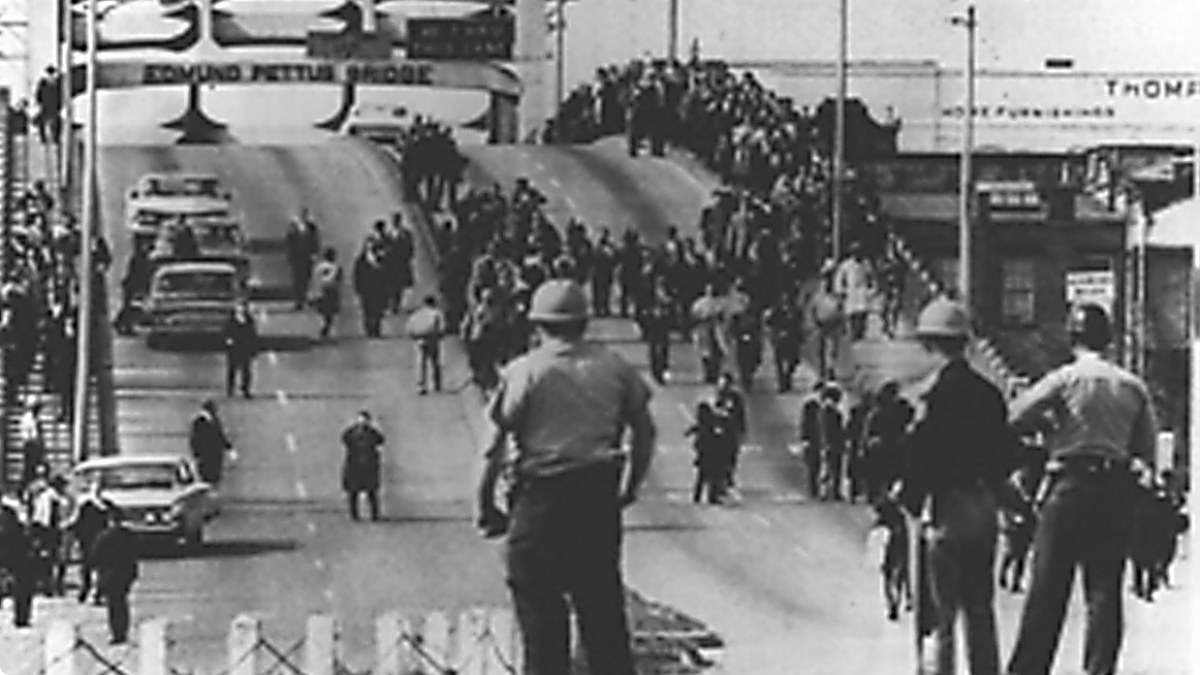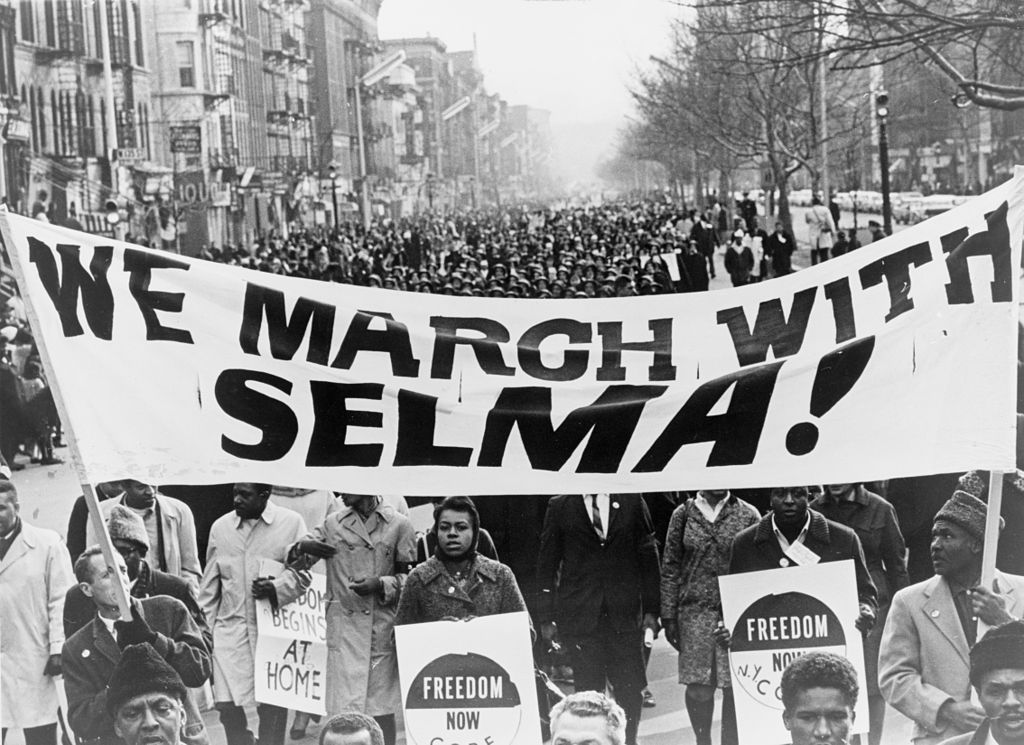
Fifty years ago, on Sunday, March 7th, 1965, six hundred civil rights activists gathered at the Brown Chapel AME Church in Selma, Alabama to start a peaceful 54-mile trek to the state capitol in Montgomery. The activists were upset at the wrongful death of Marion resident Jimmy Lee Jackson and the denial of their constitutional right to vote and planned to take their cause directly to Alabama Governor George Wallace.
The demonstrators faced no resistance as they marched through downtown Selma. However, as John Lewis and co-organizer Hosea Williams arrived at the crest of the now famous Edmund Pettus Bridge, they saw a row of state troopers waiting for them. Behind them stood deputies from the county sheriff's office as well as dozens of white spectators waving Confederate flags.

Realizing that they were all anticipating a confrontation, the activists began walking in single file. When they came to a halt about 50 feet away from the authorities, the marchers were informed their act was unlawful and advised to head home or to church. When the group refused to budge, the state troopers began using tear-gas and batons to disperse them. Though they succeeded, it was only after fifty activists had been mercilessly beaten and hospitalized.
But the militants' suffering was not in vain. "Bloody Sunday" as it is now called, was televised live, bringing to the nation's attention an injustice that had thus far not been widely known. Eight days later, President Lyndon Johnson introduced the Voting Rights legislation. In his now famous speech, he called the events in Selma "a turning point in man's unending search for freedom,” and even compared them to the Revolutionary War battles of Concord and Lexington.

The Selma incident also prompted civil rights leader Martin Luther King Jr. (MLK) to try to re-enact the protest on March 9th,1965. However, members of Congress discouraged him and asked him to wait until a court ruling was passed on whether protesters deserved to obtain federal protection.
Despite the warnings, MLK continued only to be stopped again at the end of the Edmund Pettus Bridge. Fortunately, this time around there was no violence. It was not until March 21st that the activists received federal protection and were able to complete their quest. Five months later, on August 6th, 1965, President Johnson signed the Voting Rights Acts of 1965. It barred discriminatory voting practices like literacy tests as a condition to voting, that had been adopted by many southern states after the Civil War.

It is, therefore, no wonder that the 50th anniversary of the "Bloody Sunday" that resulted in equal voting rights for everyone was celebrated with so much enthusiasm. On Sunday, March 8th, an estimated 70,000 people gathered at the foot of the fateful bridge in Selma and made their way across, completing a journey that began half a century ago.
Leading the crowd was President Obama and his family, former US leader George Bush and his wife Laura, as well as several prominent civil rights leaders. Also present was John Lewis, the organizer of the original protest. The civil rights activist now serves as the U.S. Representative for Georgia's 5th congressional district.
Though most people headed home soon after, approximately 60 people gathered at the foot of the bridge on Monday morning, to re-enact the historic march all the way to Montgomery. Along the way, they will be met by several marchers and join in the numerous planned celebrations.

Their adventure will culminate in a big rally at the state capitol in Montgomery on Friday, March 13th - the same spot where 50-years ago, Martin Luther King Jr. assured a large crowd of hopeful residents that racial equality and justice would eventually prevail. And the celebrations will not end there. Selma and Montgomery have a series of special events planned for visitors that extend all the way to August 6th, the day when the Voting Rights Acts of 1965 became law.
Resources: blackpast.org,nps.gov,usatoday.com,npr.com,wikipedia.com